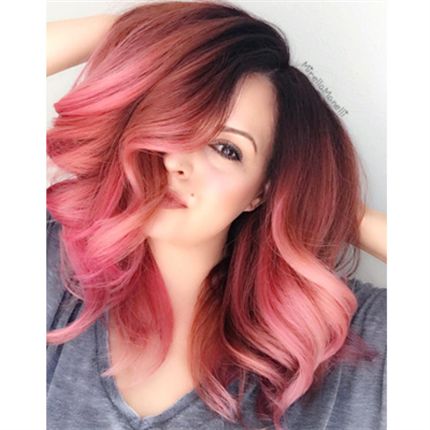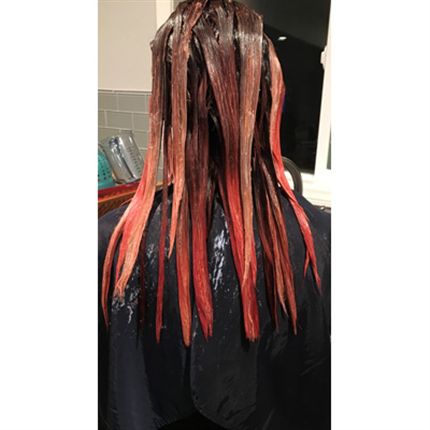Rose Blush Color Formula
Kitchens: they’re more than just a room in your home for storing, preparing and eating food. Turns out, they can also double as a beauty hotspot…at least it does for bestie stylists Yadira Muñoz (@jedihairmaster) and Mirella Manelli (@mirellamanelli). They call themselves kitchen beauticians, which basically means that when they’re not in the salon working with clients, they’re in their kitchen trying out new color formulas on their friends, and that’s exactly where this rich rose blush color came from! Dying to know the deets? We were, too. So we reached out and got the how-to from Yadira. Get the steps below.
Pricing: “So normally if we weren’t playing kitchen beautician and this were a regular client, I would’ve charged about $300 starting price for cut, ombré, full color and treatment,” shares Yadira.








